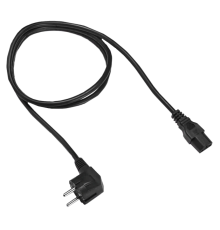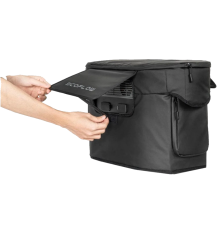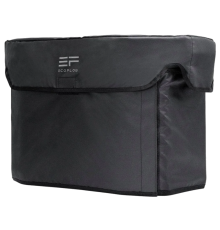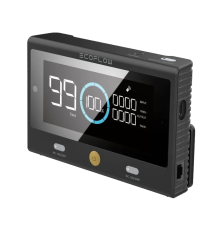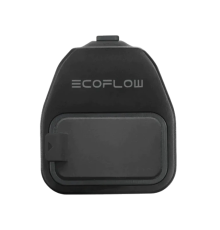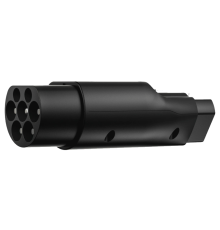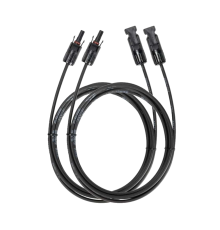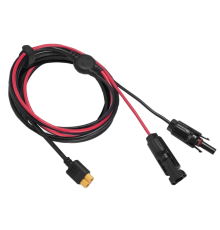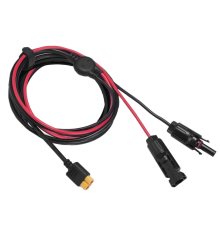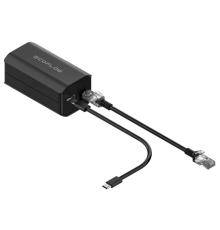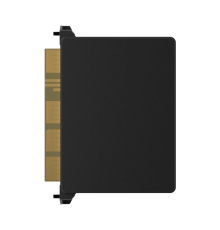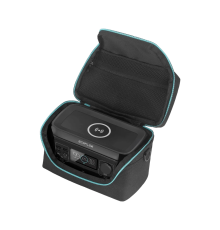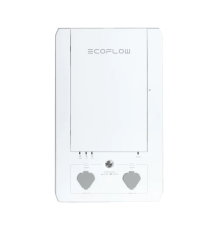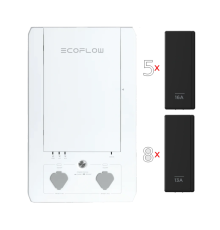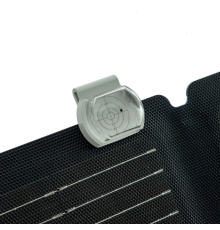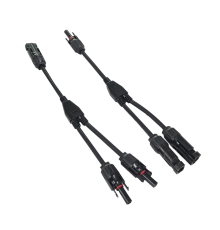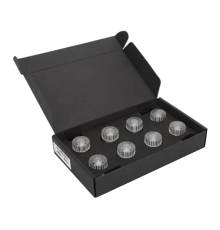Accessories for solar systems are indispensable helpers and additional components that allow for the most efficient use of solar energy in everyday life.
The list of such accessories includes:
1. Solar panels. They are the main element of a solar system and are responsible for converting sunlight into electrical energy. The power and efficiency of the panels depend on their technical characteristics.
2. Charge controllers. These devices control the charging of batteries, regulate voltage, and prevent overcharging or deep discharge. They also protect the solar panel from high voltage and current spikes.
3. Inverters. They convert the direct current obtained from solar panels into alternating current, allowing it to be used for various household electrical appliances.
4. Batteries. They are used to store the electrical energy obtained from solar panels. Batteries with high capacity provide continuous power supply and the ability to use the system at night or in the absence of sunlight.
5. Cables and connectors. They are necessary for connecting all components of the solar system together, as well as for connecting the system to external power sources.
6. Mounting brackets. They ensure secure installation of solar panels on the roof of a building or other platform. The brackets must be strong and resistant to wind and other atmospheric conditions.
7. Monitoring systems. They allow for monitoring the operation of the solar system, controlling the battery charge level, and analyzing the system's efficiency.
These accessories allow for the efficient use of solar energy to provide electricity to various objects - homes, cottages, offices, warehouses, and even entire settlements. They help reduce dependence on traditional energy sources, reduce electricity costs, and contribute to a more environmentally friendly lifestyle.
The list of such accessories includes:
1. Solar panels. They are the main element of a solar system and are responsible for converting sunlight into electrical energy. The power and efficiency of the panels depend on their technical characteristics.
2. Charge controllers. These devices control the charging of batteries, regulate voltage, and prevent overcharging or deep discharge. They also protect the solar panel from high voltage and current spikes.
3. Inverters. They convert the direct current obtained from solar panels into alternating current, allowing it to be used for various household electrical appliances.
4. Batteries. They are used to store the electrical energy obtained from solar panels. Batteries with high capacity provide continuous power supply and the ability to use the system at night or in the absence of sunlight.
5. Cables and connectors. They are necessary for connecting all components of the solar system together, as well as for connecting the system to external power sources.
6. Mounting brackets. They ensure secure installation of solar panels on the roof of a building or other platform. The brackets must be strong and resistant to wind and other atmospheric conditions.
7. Monitoring systems. They allow for monitoring the operation of the solar system, controlling the battery charge level, and analyzing the system's efficiency.
These accessories allow for the efficient use of solar energy to provide electricity to various objects - homes, cottages, offices, warehouses, and even entire settlements. They help reduce dependence on traditional energy sources, reduce electricity costs, and contribute to a more environmentally friendly lifestyle.
EcoFlow AC Cable EU
EcoFlow AC Cable EU
EcoFlow AC Cable EU is a high-quality and reliable cable designed specifically for use with EcoFlow portable power stati..
Not available
1 394.35 грн
EcoFlow Car Charge XT60 Cable
EcoFlow Car Charge XT60 Cable
EcoFlow Car Charge XT60 Cable is a cable that combines high performance and environmental efficiency. It is designed usi..
Not available
1 875.09 грн
EcoFlow DELTA Max Bag
EcoFlow DELTA Max Bag
The EcoFlow DELTA Max Bag is a stylish and versatile backpack designed to accommodate and protect your EcoFlow DELTA Max..
Not available
4 278.78 грн
EcoFlow DELTA Max Extra Battery Bag
EcoFlow DELTA Max Extra Battery Bag
The EcoFlow DELTA Max Extra Battery Bag is the perfect companion for your DELTA Max portable power station. Designed to ..
Not available
4 278.78 грн
EcoFlow DELTA Pro Bag
EcoFlow DELTA Pro Bag
EcoFlow DELTA Pro Bag is a stylish and convenient bag specifically designed for carrying the portable power station EcoF..
Not available
5 240.25 грн
EcoFlow DELTA Pro Remote Control
EcoFlow DELTA Pro Remote Control
The EcoFlow DELTA Pro Remote Control is an innovative device designed to enhance the user experience with the DELTA Pro ..
Not available
5 240.25 грн
EcoFlow DELTA Pro to Smart Generator Adapter
EcoFlow DELTA Pro to Smart Generator
The EcoFlow DELTA Pro to Smart Generator Adapter is a cutting-edge accessory designed to enhance the flexibility and fun..
Not available
4 005.29 грн
EcoFlow EV X-Stream Adapter
EcoFlow EV X-Stream Adapter
The EV X-Stream adapter allows you to charge the EcoFlow DELTA Pro at thousands of level 2 AC charging stations worldwid..
Not available
4 454.83 грн
EcoFlow MC4 Solar Extension Cable
EcoFlow MC4 Solar Extension Cable
EcoFlow MC4 Solar Extension Cable is a high-quality product designed for use with solar panels and charging devices. It ..
Not available
2 355.83 грн
EcoFlow MC4 to XT60 Solar Cable 3.5m
EcoFlow MC4 to XT60 Solar Cable 3.5m
EcoFlow MC4 to XT60 Solar Cable 3.5m is a 3.5-meter long solar cable designed for use with solar panels. The cable has M..
Not available
1 394.35 грн
EcoFlow MC4 to XT60 Solar Cable 5m
EcoFlow MC4 to XT60 Solar Cable 5m
EcoFlow MC4 to XT60 Solar Cable 5m is a 5-meter solar cable specifically designed for use with solar panels, allowing fo..
Not available
1 875.09 грн
EcoFlow Portable Power Station Grounding Adapter Заземлитель
EcoFlow Portable Power Station Grounding Adapter
EcoFlow Portable Power Station Grounding Adapter is a grounding device specifically designed for use with EcoFlow portab..
Not available
1 394.35 грн
EcoFlow Relay Module
EcoFlow Relay Module
EcoFlow Relay Module is a compact relay module designed to provide efficient power management. It offers a simple and re..
Not available
1 875.09 грн
EcoFlow RIVER Bag
EcoFlow RIVER Bag
EcoFlow RIVER Bag is a stylish and practical bag specifically designed for carrying the portable power station EcoFlow R..
Not available
3 797.61 грн
EcoFlow RIVER mini Bag
EcoFlow RIVER mini Bag
EcoFlow RIVER mini Bag is a convenient and stylish bag specifically designed for carrying and protecting the compact por..
Not available
2 836.14 грн
EcoFlow Smart Home Panel
EcoFlow Smart Home Panel
EcoFlow Smart Home Panel is an innovative smart home system that combines all the necessary functions for automation and..
Not available
76 916.70 грн
EcoFlow Smart Home Panel Combo
EcoFlow Smart Home Panel Combo
The EcoFlow Smart Home Panel Combo is an innovative and environmentally-friendly solution for sustainable living. This a..
Not available
72 643.48 грн
EcoFlow Solar Angle Guide Указатель солнечного угла
EcoFlow Solar Angle Guide
EcoFlow Solar Angle Guide is an innovative device specifically designed to determine the optimal position of solar panel..
Not available
676.45 грн
EcoFlow Solar MC4 Parallel Connection Cable
EcoFlow Solar MC4 Parallel Connection Cable
EcoFlow Solar MC4 Parallel Connection Cable is a cable specifically designed to connect solar panels to each other in pa..
Not available
1 202.06 грн
EcoFlow Solar Tracker Solar Tracker
EcoFlow Solar Tracker
EcoFlow Solar Tracker is an innovative solar tracker that maximizes the use of solar energy. This advanced technology is..
Not available
63 028.73 грн
EcoFlow Suction Cups for Solar Panel
EcoFlow Suction Cups for Solar Panel
EcoFlow suction cups for solar panels are an innovative solution for mounting solar panels on various surfaces. They are..
Not available
1 443.07 грн
Showing 1 to 21 of 21 (1 Pages)
